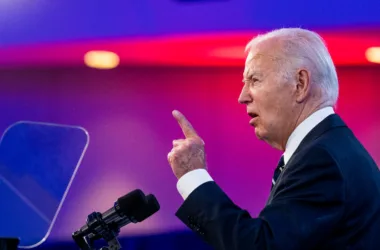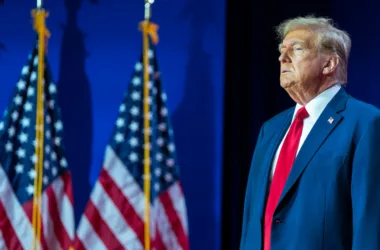Parents will pay more than ever for back-to-school supplies such as notebooks, pencils and graphing paper as spending jumps to record highs this summer, recent reports show.
The industry reports rely on surveys of consumer spending expectations and price trends that analysts cannot adjust for inflation. But financial experts say spending is increasing because families will pay more for the same items they bought last year, buy more big-ticket electronics and use credit cards for more purchases as they stretch their budgets.
“Spending is only up because prices have increased significantly,” Will Hild, executive director of the advocacy group Consumers’ Research, told newstodayalert.
Consumer advocates urge parents to limit spending to necessities, seek out cheaper off-brands and work with schools to see what supplies they can buy later when demand and prices drop.
“To cope, parents can take note of supplies that have fallen victim to inflation and hunt for deals,” Hamilton Noel, data scientist for market researcher Pattern, told The Times. “Dollar stores and other budget retailers may be a good place to start.”
A typical basket of 33 school items listed on Amazon.com jumped in cost by 5.45% over the past year from $506.53 to $515.48, outpacing the most recent annual inflation numbers for all goods, Pattern reported Thursday. The firm averaged daily prices for the most popular items on Amazon for each day of the year so far, comparing them to the same period last year.
According to the most recent data from the Bureau of Labor Statistics, the Consumer Price Index for all items minus food and energy shot up by 4.8% year-over-year in June.
“Although the rate of inflation has begun to cool for the economy, prices for many goods, including back-to-school supplies, have not returned to where they were a year ago,” Mr. Noel added in an email. “While small increases may not be notable for single product purchases, increases can add up quickly for an entire basket of new supplies.”
The National Retail Federation estimates that parents of K-12 students will spend a record-high $41.5 billion on school supplies this year, averaging a new high of $890.07 per family. That’s up more than $4 billion from $36.9 billion spent last year and from the previous high of $31.7 billion, measured in 2021.
The trade group first surveyed consumers about their back-to-school shopping habits in 2003.
Spending is partly rising because slightly more parents are eyeing expensive laptops, tablets and calculators this year, even as they hunt for bargains, an NRF spokesperson told newstodayalert on Thursday.
“This is consistent with the top reason back-to-class shoppers said they were spending more: that they needed more new items than last year,” the spokesperson said.
The NRF found that 43% of consumers responding to this year’s survey said they are spending more because they need more new items, up from 32% last year.
More parents are also using credit cards rather than cash, increasing their debt and what they spend on swipe fees.
Swipe fees average 2.24% per transaction for ordinary credit cards and 4% for premium cards. The profit banks make from them has shot up as more Americans use credit for small expenses.
According to the Merchants Payment Coalition, an advocacy group that supports abolishing the fees, the growing number of parents using credit will cost each family about $20 in swipe fees out of the $890.07 the National Retail Federation expects them to spend on school items this year.
That adds up to $929.6 million out of the record $41.5 billion that families of school-age children expect to spend on back-to-school items, the group noted Thursday.
According to the latest Nilson Report data, U.S. consumers spent a record $160.69 billion on swipe fees last year, up from $137.8 billion in 2021.
Credit card debt and inflation are “the main reasons American consumers are spending more” on school supplies this year, said Alfredo Ortiz, president and CEO of Job Creators Network, a right-leaning advocacy group.
In an email, he pointed to Federal Reserve Bank of St. Louis data showing U.S. credit card debt swelled to a record high of more than $993 billion this month. He also noted that consumer prices have risen by 16% since January 2021.
“These price hikes have forced Americans to take on record credit card debt,” Mr. Ortiz said. “Keep in mind that even while inflation has moderated over the last year due to the Federal Reserve’s aggressive interest rate increases, it is compounding on a much higher base.”
Rising prices explain the “large majority” of back-to-school spending increases, said economist Patrick Gourley, a professor of business analytics at the University of New Haven.
“There’s no reason to think that schools are requiring students to buy more folders, index cards [and] crayons this year than last year,” Mr. Gourley added in an email.
The Pattern report found prices have increased for 23 out of 33 classroom items over the past year: graphing paper, mechanical pencils, folders, highlighters, index cards, crayons, composition books, rulers, scientific calculators, notebooks, ballpoint pens, boys’ shoes, colored pencils, erasers, kids lunch boxes, lunch boxes, pencils, pencil sharpeners, pens, red pens, teen boy clothes, girls clothes and White Out.
Prices have dropped slightly for 10 other items: Backpacks, book covers, boys’ clothes, calculators, girls’ shoes, markers, pencil cases, pencil pouches, teen girl clothes and teen girl shoes.
In the steepest increase, the prices of the average package of graph paper listed on Amazon jumped from $9.37 last year to $11.69 this year. The price of folders rose from $11.43 to $15.18, while Crayons went up from $10.43 to $13.01 over the same period.
“Inflation driving up prices on school supplies will make it more difficult for struggling parents to provide those supplies for their students, and that is going to put even more of a burden on the many teachers who go out of their way to purchase supplies for students from struggling families,” said Francisco Gonzalez, executive director of the Economic Club of Miami business networking group.
Companies are raising their prices due to a “genuine shortage” of supplies after three years of pandemic-era cost increases and supply chain delays, said Michael Austin, a former economic adviser to two Republican governors of Kansas.
Parents will likely spend less on back-to-school items than the NRF projects as interest rate hikes force them to limit their spending, he added in an email.
“Inflation and supply troubles are tag-teaming their wallets, making it a tough balancing act for American parents,” said Mr. Austin, a business consultant and member of Project 21, a network of Black conservatives.









